When to Elope in Colorado – a Seasonal Guide




When to Elope in Colorado
Deciding when to elope in Colorado is unique to you and your partner based on what type of weather, colors, landscapes, experiences, and style you prefer. It is important to choose the best time for you because it will enhance your overall experience. This guide will help you identify what time of year fits your needs best and help you figure out when to elope in Colorado. Time of year will determine many details of your day including what time of day will be best for photography. Keep in mind that the sun sets around 5PM in the winter and close to 9PM in the summer. Since the best times for photographs are near sunrise and sunset, the possibilities can fluctuate quite a bit.
First, we’ll briefly define some variables influenced by time of year and subsequently break down what each month is generally like in Colorado. Forms of water, weather, and landscape aesthetics go through definitive cycles. There is something for everyone so let’s see what fits you best!
Moreover, where you elope will certainly influence when you elope. The main factor is that elevation will affect many variables in any given area. The difference between 7,000 feet and 10,000 feet is significant. The higher up you go, the shorter the season will be and requires more precision in regards to proper timing.
Want help finding the best places to elope in Colorado? Click Here 🙂
Forms of Water
The number one landscape request from our clients besides mountains is water. Water is the most varying element in Colorado. Snowmelt after winter creates fuller bodies of water, roaring waterfalls, and more musical streams and rivers. Still summer lakes often reflect the shoreline creating symmetry and grandeur. The frozen forms are also a crisp refreshment with crystalized formations, sturdy lakes, and temporary paths to explore. The transition periods of freezing and thawing are also quite lovely and enchanting. Each form holds unique beauty and has different experiences in store for you. Which one calls to you the most?












Weather
Without question, your comfort on your elopement day is vital. It is worth prioritizing the way you feel above all else. If you and your partner differ on your preferred temperatures, it’s best to choose a season that isn’t too extreme one way or the other. Understand that temperatures at high elevations can change quickly. Bringing layers and being prepared for these possible changes is essential. Even in summer months, cold temperatures occur at high elevations. Wind is also a significant factor worth considering. When you combine freezing temperatures with strong winds cascading atop a frozen lake, it can be nearly unbearable if ill prepared.




Aesthetics
Colorado is extremely colorful! You have a plethora of options to enhance any style that you prefer. Think about what landscapes speak to you as well as what colors you enjoy. Furthermore, what time of year you elope in Colorado will determine not only the state of the natural elements, but can also influence what you wear and what accessories will best supplement your style. Coordinate with Mother Nature to enhance the overall look of your elopement day!








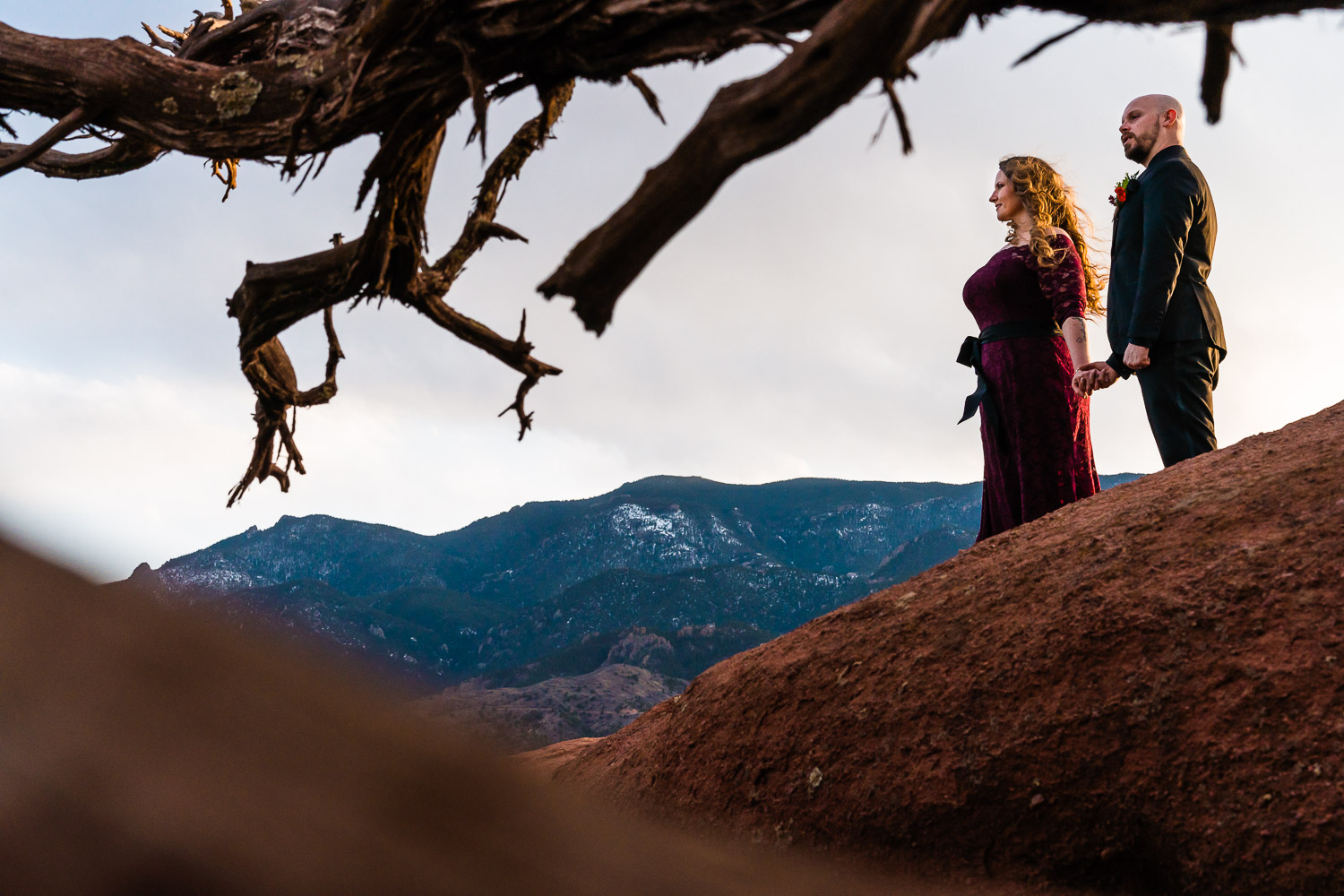
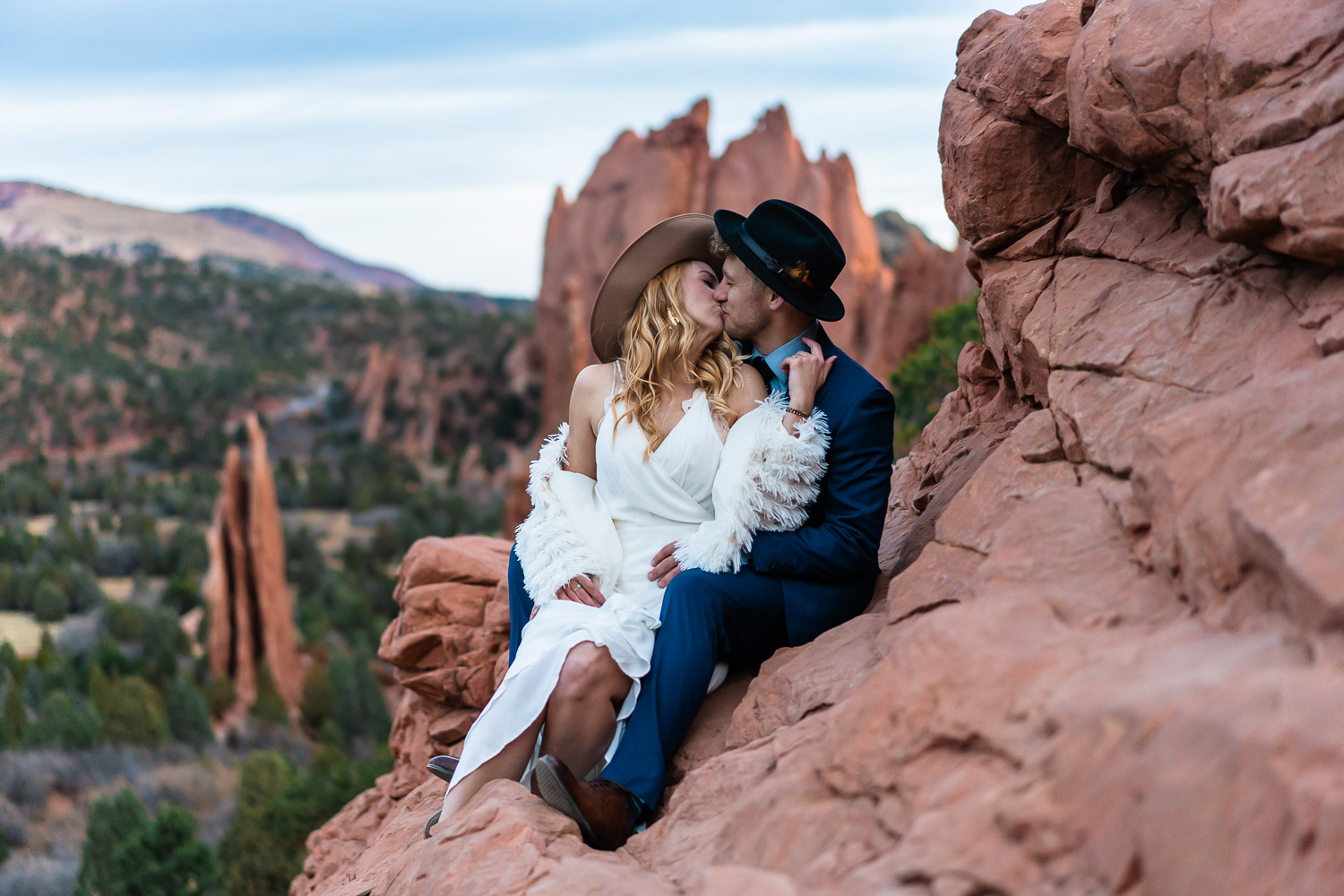

Colorado Seasons
The four seasons are well defined in Colorado. However, the temperature pendulum swings far and wide throughout the year and can be found nearly anywhere on the spectrum at any given time. Although one never can know exactly what to expect, the following is a month by month breakdown of what the general pattern is for our seasons in the mountains.
Winter (December, January, February)

- December – Snow begins to accumulate and cold weather sets in. The days are at their shortest so photos typically wrap around 430-5PM.
- January – Blankets of snow truly define the landscape as a sweet wonderland arrives.
- February – Similar to January with an even higher chance of snowfall.


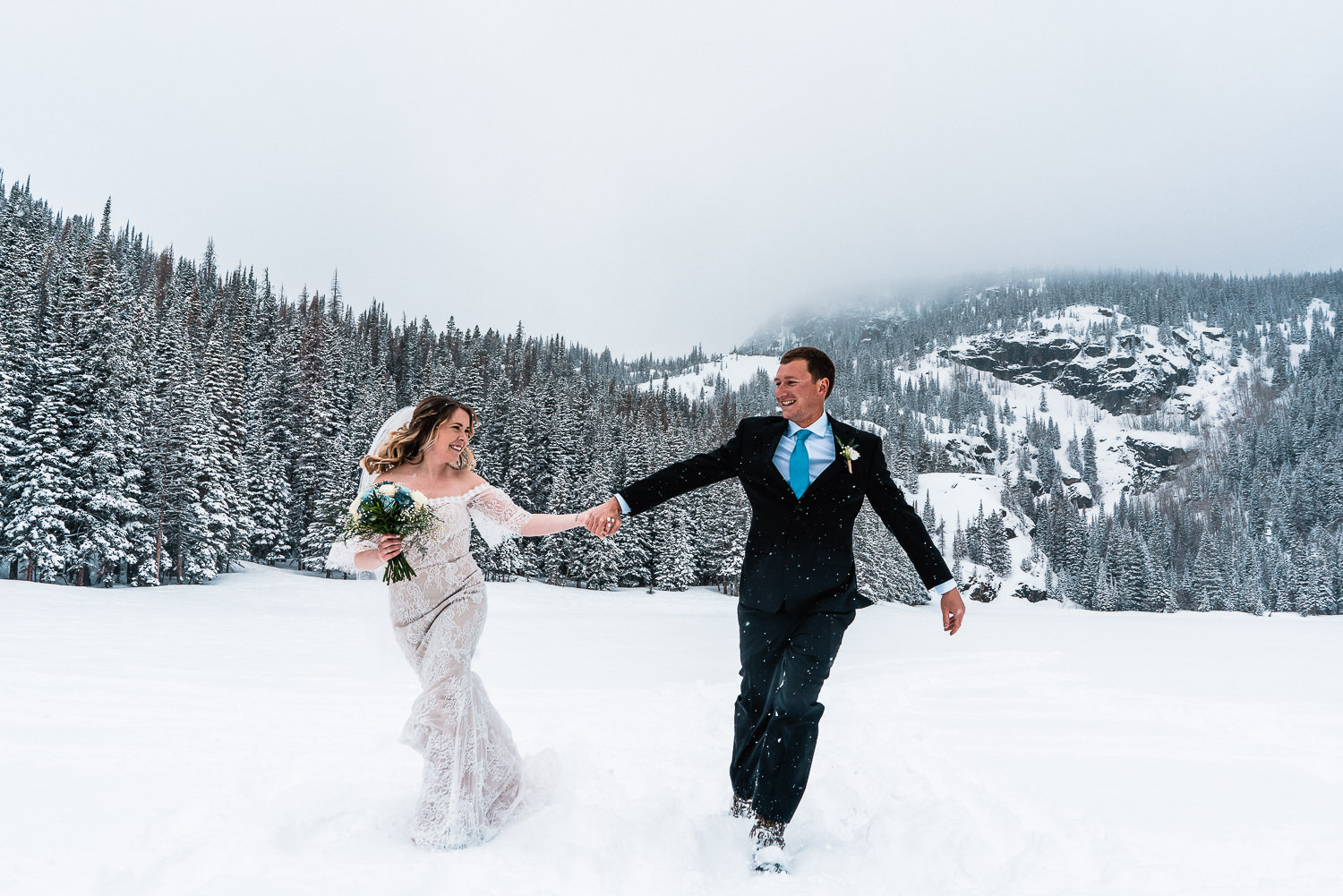

Spring (March, April, May)
- March – Snow remains prevalent in the mountains along with cold temperatures. Snowfall is common in March. Daylight Savings Time moves sunset later 1 hour.
- April – Lakes begin thawing and snow melts during warm days that begin to appear periodically.
- May – Temperatures can be anywhere, but warmth is on the rise. The natural grounds begin to fully appear in places.





Summer (June, July, August)

- June – Snow is still melting and high alpine lakes remain partly frozen. Days are long so photography typically wraps around 830-9PM.
- July – Warm weather appears more consistently and wildflowers begin to blossom.
- August – The height of warmer weather heats lakes to their summer temperatures. Wildflowers begin to fade in middle of the month.








Autumn (September, October, November)
- September – Autumn in the mountains begins to take form. Fall leaves start peaking over the last couple of weeks.
- October – At higher elevations, fall leaves are nearly all gone by the middle of the month. The weather begins to significantly cool down.
- November – Snow begins to fall consistently in the mountains. The mountain landscape turns brown and nearly colorless. It doesn’t look like autumn, nor is it defined as Winter yet. Daylight Savings Time moves sunset earlier by 1 hour.














How Elevation Impacts Location
To give a few examples of what role elevation plays, the following collages depict the magnitude of elevation. It is worth noting that a body of water’s placement in relation to mountains and other surrounding factors also impacts its seasonality. Some locations cannot be accessed in winter because of snowfall and road closures.
This first example is from the very same day in the second week of June and the elevation gain between locations is only about 500 total feet. In order to efficiently transfer our gear, we actually had to pull (and carry) a wagon along a 2 mile road in and out to reach these lakes because the winter gate prohibited access via vehicle. One lake looks warm enough to jump into, and the other remains nearly frozen.




The images in the next example were taken in April on the same day and the elevation gain was also approximately 500 feet. The first spot has a clearly defined stream while the second shows a completely frozen lake.


This final example demonstrates how quickly the weather can change at high elevations. These images are literally taken about 20 minutes apart. We arrived and had a snowy, chilly, and beautiful ceremony. Shortly thereafter, the sun broke through, the wind slowed, and it felt like it warmed up 30 degrees! It was two completely different sides of the spectrum. And wouldn’t you know it – the snow picked back up not too long after that!






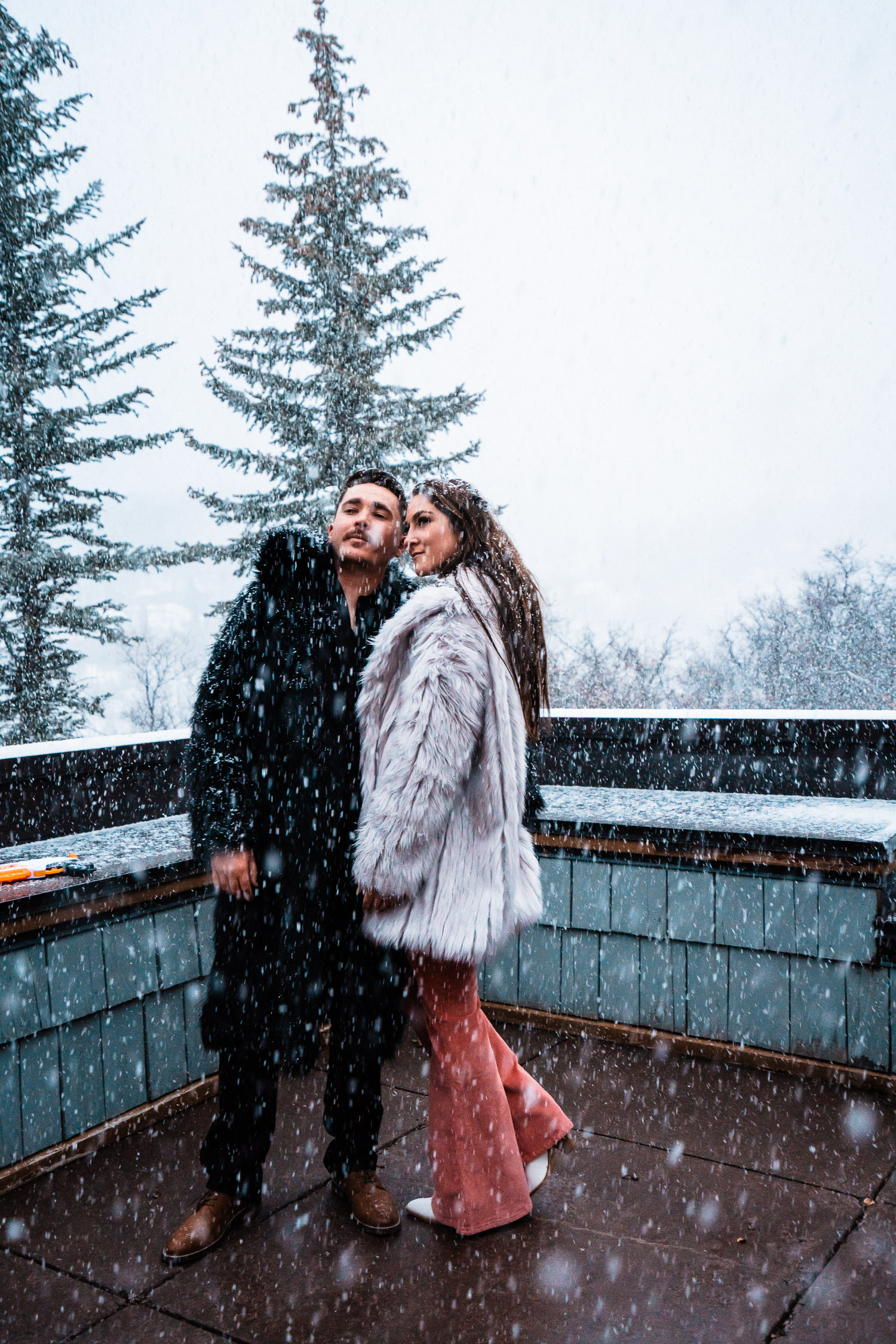



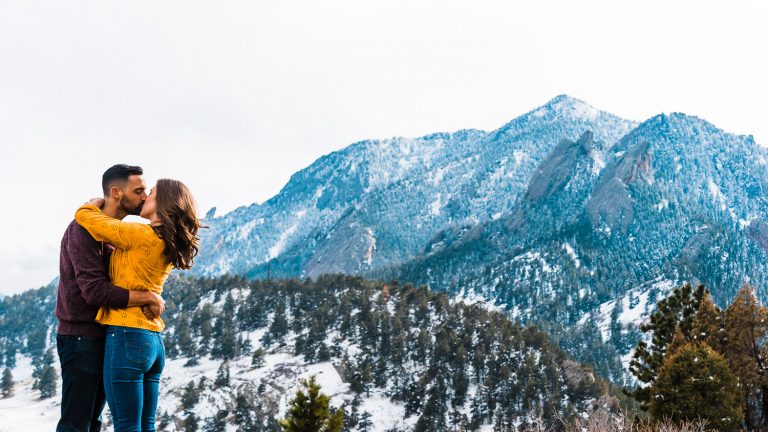


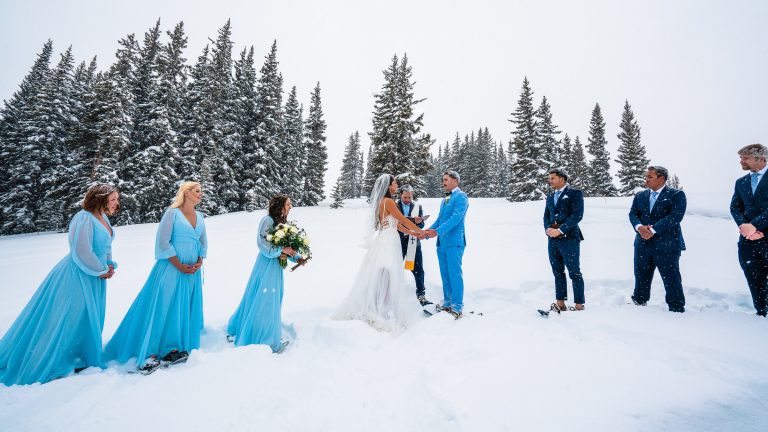

Hey there! Would you mind if I share your blog with my twitter group? There’s a lot of people that I think would really enjoy your content. Please let me know. Thank you
Hi there! Feel free to share 🙂